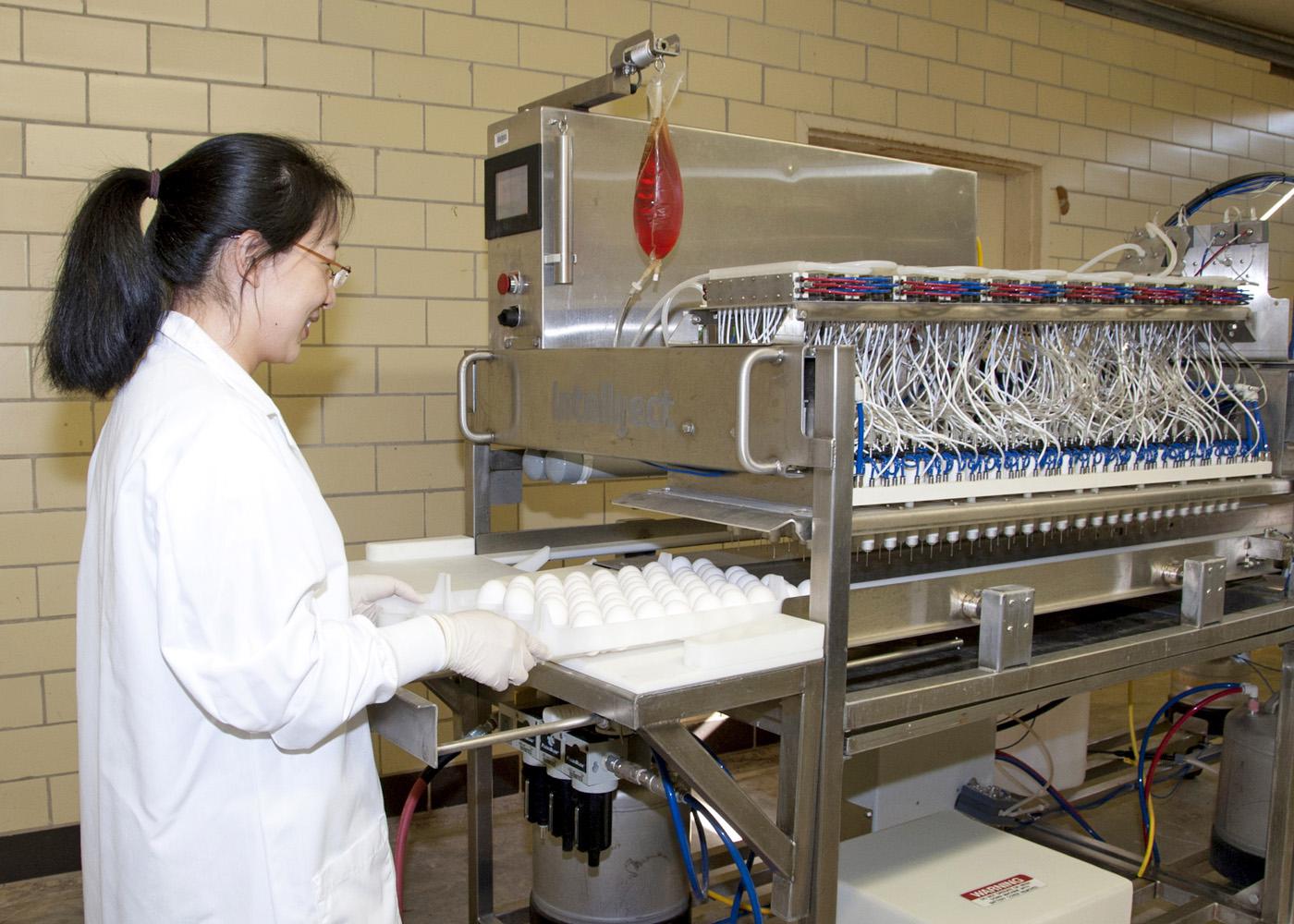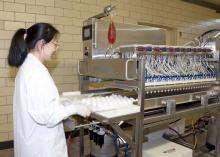Information Possibly Outdated
The information presented on this page was originally released on September 8, 2011. It may not be outdated, but please search our site for more current information. If you plan to quote or reference this information in a publication, please check with the Extension specialist or author before proceeding.
MSU researches poultry health, growth
By Karen Templeton
MSU Ag Communications
MISSISSIPPI STATE – Mississippi State University researchers are investigating ways to improve the nutrition and growth of the state’s most profitable bird.
Poultry is consistently Mississippi’s No. 1 agricultural commodity, and MSU supports the industry with a number of research projects. One of the current projects is helping determine ways to increase the hatchability and health of broilers. Injecting eggs, also known as in ovo injection, is used to vaccinate poultry for diseases, but MSU researchers are finding a new way to use the procedure.
“Chicken embryos are made up of water, protein and fat. To get the energy they need to hatch, they have to convert that protein and fat into carbohydrates,” said Wei Zhai, assistant Extension professor in MSU’s Department of Poultry Science. “So that the hatchlings can reserve their fat and protein for needed growth, we are injecting eggs with carbohydrates before they hatch.”
To inject the eggs, Zhai uses a commercial multi-egg injector me. The machine was donated by the IntelliJect to MSU in 2007. The university is the only academic institution in North America to own the machine. The system provides uniform delivery, ensuring that the same volume and concentration of vaccines or nutrients are provided to each egg.
“We are injecting the eggs just like anyone in the industry would, so we are seeing the practicality of the research,” Zhai said. “Without the machine, the work would be time consuming and difficult. Its use also requires less labor, saving the growers and producers money.”
Thus far, the research indicates that in ovo injection of carbohydrates can provide benefits to commercially grown poultry.
“We are seeing an earlier increase in body weight and good hatching,” Zhai said. “We want to continue looking at different volumes and concentrations of carbohydrates so that we get the most efficient injection amount.”
David Peebles, interim head of the poultry department and Mississippi Agricultural and Forestry Experiment Station researcher, said the industry is looking forward to using this new procedure.
“Vaccine injections have been used for many years and have proven useful,” Peebles said. “Using the same process to provide chicks with an earlier boost provides a lot of potential for the industry.”
Peebles and Zhai are not limiting their in ovo work to carbohydrates; they are also researching the potential of vitamin supplements.
“A pound of highly purified vitamin D product can cost up to approximately $20,000 per pound. So, it may be very costly to add efficacious amount of vitamins like this to broiler diets,” Peebles said. “In ovo injection may be useful in providing birds with an early supply of nutrients, such as vitamin D to help with bone growth.”
Providing nutrients and vaccinations in ovo not only can provide benefits to the industry but also help reduce birds’ stress, as they do not have to be handled to get injections after hatching.
“We want to continue to look at ways to make this procedure easy to use and helpful,” Zhai said.






